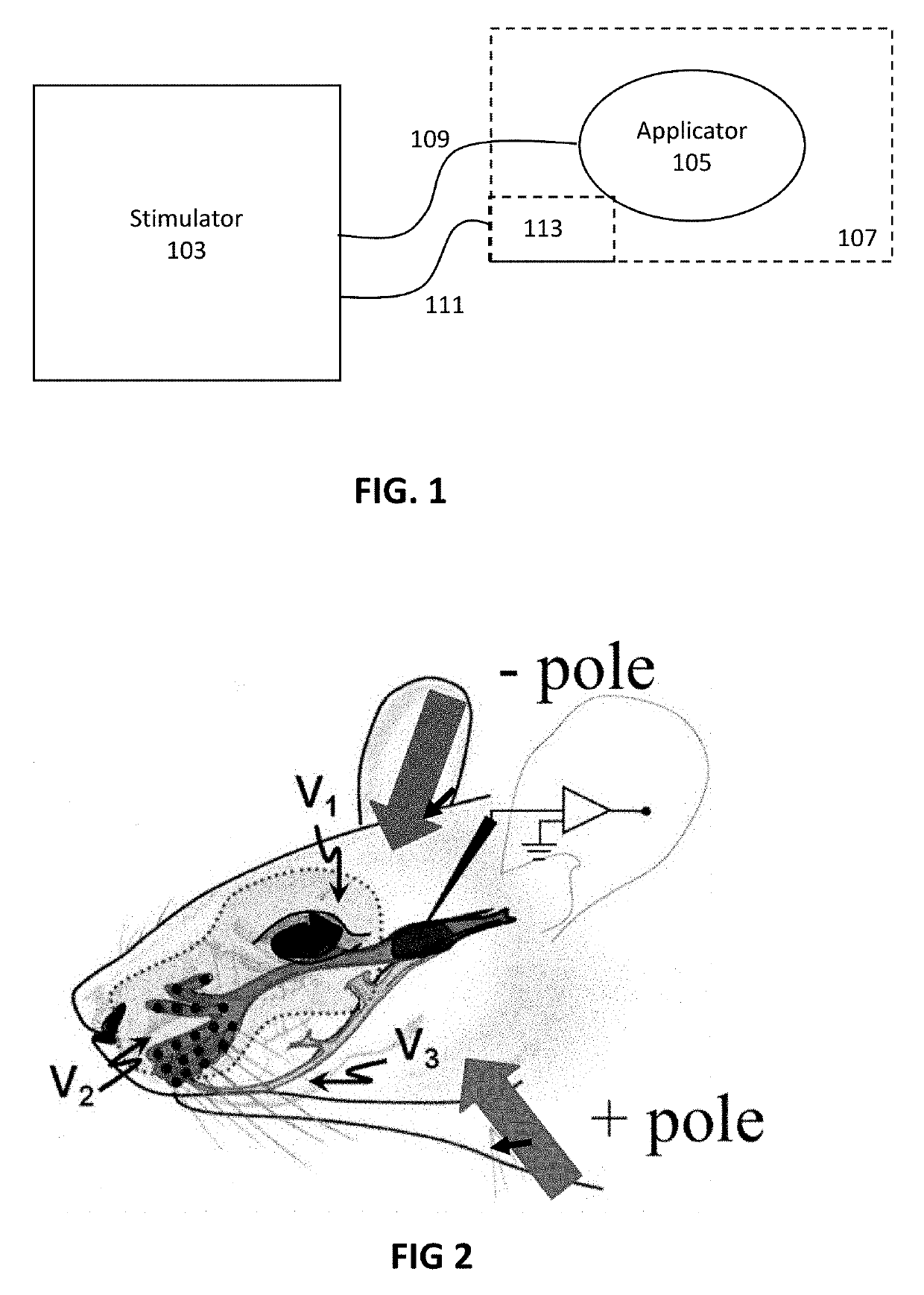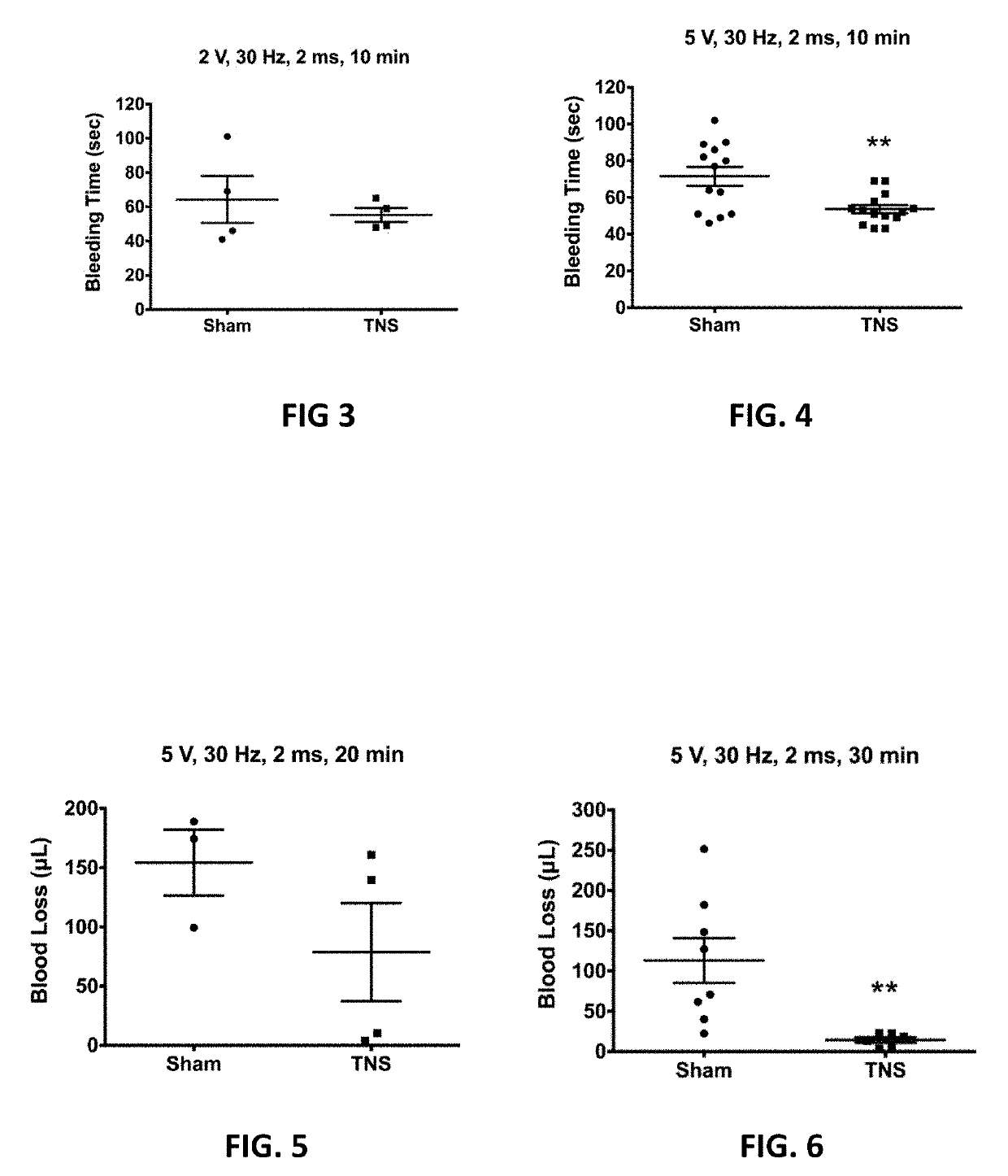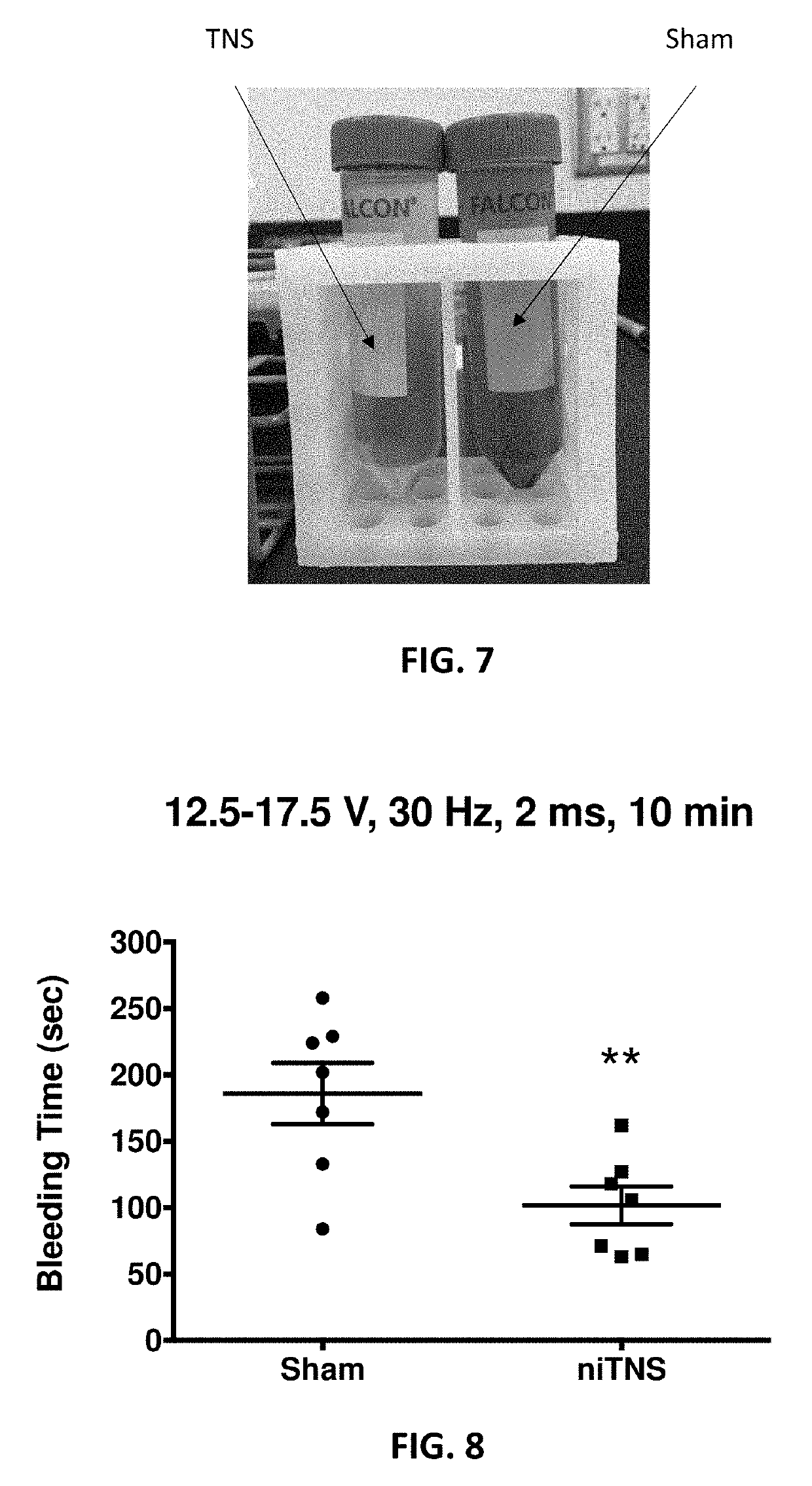Methods and apparatuses for reducing bleeding via electrical trigeminal nerve stimulation
a technology of electrical trigeminal nerve and electrical stimulation, which is applied in the field of preventing and/or treating bleeding in subjects, can solve the problems of reducing the effect of bleeding, reducing the number of patients, and reducing the risk of bleeding, so as to reduce the loss of blood volume, reduce bleeding time, and reduce bleeding. the effect of loss
- Summary
- Abstract
- Description
- Claims
- Application Information
AI Technical Summary
Benefits of technology
Problems solved by technology
Method used
Image
Examples
examples
[0067]FIG. 2 illustrates an experimental set-up that was used to illustrate the application of trigeminal stimulation to reduce bleeding. In this set-up, the stimulation device includes two single, monopolar, stainless steel needle electrodes (0.38 mm, Technomed, White Bear Lake, Minn.) attached to an MP36R Data Acquisition System (Biopac Systems, Goleta, Calif.) attached to a low voltage stimulation adaptor (Biopac Systems, Goleta, Calif.). The positive (+) pole electrode (see + pole arrow in FIG. 2) was inserted subcutaneously into the left masseter muscle. The negative (−) pole electrode (see − pole arrow in FIG. 2) was inserted subcutaneously in the midline of the skull, midway between the caudal border of the ipsilateral eye and cranial border of the ipsilateral ear. This spatial arrangement likely maximizes current flow across all three branches (V1, V2, V3) of the trigeminal nerve as they course back to the brain (see the block wedge in FIG. 2).
[0068]The effect of trigeminal ...
PUM
 Login to View More
Login to View More Abstract
Description
Claims
Application Information
 Login to View More
Login to View More - R&D
- Intellectual Property
- Life Sciences
- Materials
- Tech Scout
- Unparalleled Data Quality
- Higher Quality Content
- 60% Fewer Hallucinations
Browse by: Latest US Patents, China's latest patents, Technical Efficacy Thesaurus, Application Domain, Technology Topic, Popular Technical Reports.
© 2025 PatSnap. All rights reserved.Legal|Privacy policy|Modern Slavery Act Transparency Statement|Sitemap|About US| Contact US: help@patsnap.com



